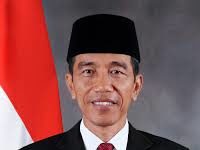Web Desk
The origins of tea stretch back more than 5 000 years, but its contributions to health, culture and socioeconomic development are still as relevant today. Its popularity across the world is evident from the fact that global consumption of tea amounted to about 6.3 billion kilograms in 2020 and is estimated to reach to 7.4 billion kilograms by 2025. Tea is the second most consumed drink in the world, after water, according to a report of Food and Agriculture Organization (FAO).
China with an annual production of 2.4 million tonnes is on the top of the producers table, followed by India with 0.9 million tonnes. The other major tea producing countries are:- Kenya, Sri Lanka, Turkey, Indonesia, Vietnam, Japan, Iran and Argentina.
Global trade in 2020 was affected by logistics issues and measures imposed to contain COVID-19. Increasing in-home consumption of tea more than offset declining out-of-home consumption in many instances. During the first weeks of lockdown, in home tea sales surged, increasing by 75 percent in some consuming countries.
Tea is one of the world’s oldest beverages, and is the most consumed drink in the world. Tea is available in many varieties, which differ according to the applied oxidation and fermentation technique. Tea cultivation provides employment and income to millions of smallholder growers, who are supplementing or even replacing production of larger tea estates in many countries. While three quarters of tea produced is consumed domestically, tea is a widely traded and exported commodity. Over the past decades, the global tea industry has seen rapid growth, with a rising number of consumers globally. Despite the increase of tea consumption in major producing countries, per capita consumption remains low, suggesting there is still considerable growth potential in these countries. Drinking tea can bring many healthy benefits, from anti-inflammatory to antioxidant and weight loss effects.
Even in countries like Pakistan, the tea market is now around US $ 2 billion as compared to US $ 1.42 billion just five years ago. According to an estimate, it is going to touch the mark of US $ 2.48 billion by 2025.
The tea market has evolved dramatically in the past few years in line with consumers’ changing behavior. Today, tea drinkers are more interested in high-quality products with a great story and drinks that give them specific health benefits, which has driven demand for healthy green, functional botanical tea and herbal blends. In addition, the perception of tea has also changed, as it is viewed by most younger consumers as a sensual and wellness drink.
In Pakistani market, premiumization is another positive development on the market, as customers are showing strong preferences for functional botanical blends and single estate artisanal teas. More and more people are interested in innovative flavor combinations, as well as in authenticity and the story behind certain brand. When it comes to different types, a recent trend suggests that natural, earthy alternative flavors such as ginger, matcha, turmeric and cumin are in higher demand. Cheese tea is another food service phenomenon, which has been especially popular in Asian countries such as Malaysia, Taiwan, and China.
These changing trends have jacked the consumption of tea in Pakistan in a big way. Just during the first three quarters of current fiscal year, the tea imports rose by 15.64 percent.
The tea imports during July-March (2020-21) stood at $435.098 million against the imports of $376.244 million during July-March (2019-20), according to Pakistan Bureau of Statistics (PBS).
In terms of quantity, the tea imports increased by 25.48 percent during the period under review as these grew from 155,372 metric tons to 194,962 metric tons.
The tea imports during the month of March alone were recorded at $55.784 million against the imports of $51.874 million in March 2020.
As far as the varities of the tea popular in Pakistan are. Black tea n was initially introduced during the colonial British era in South Asia. Cities like Lahore had a very vivid tea culture, the beverage quite quickly absorbed into local culture and the home. Today tea is consumed throughout the day, at breakfast, during lunch breaks, in the afternoon after lunch, and in the evening at home.
Pakistan tea culture is rich and diverse with various regions of the country having their own assortment of flavours and varieties. In Karachi, Elaichi Chai is popular, whilst Doodh Pati Chai (a very thick and milky version) is preferred in the Punjab. Varieties of sweet biscuits accompany and are enjoyed with tea. In the Khyber Pakhtunkhwa region they enjoy a green tea called ‘kahwah’. And finally in Kashmir, a ‘pink’ Kashmiri chai is enjoyed that is a wonderful concoction of pink, milky tea with pistachio and cardamoms.















